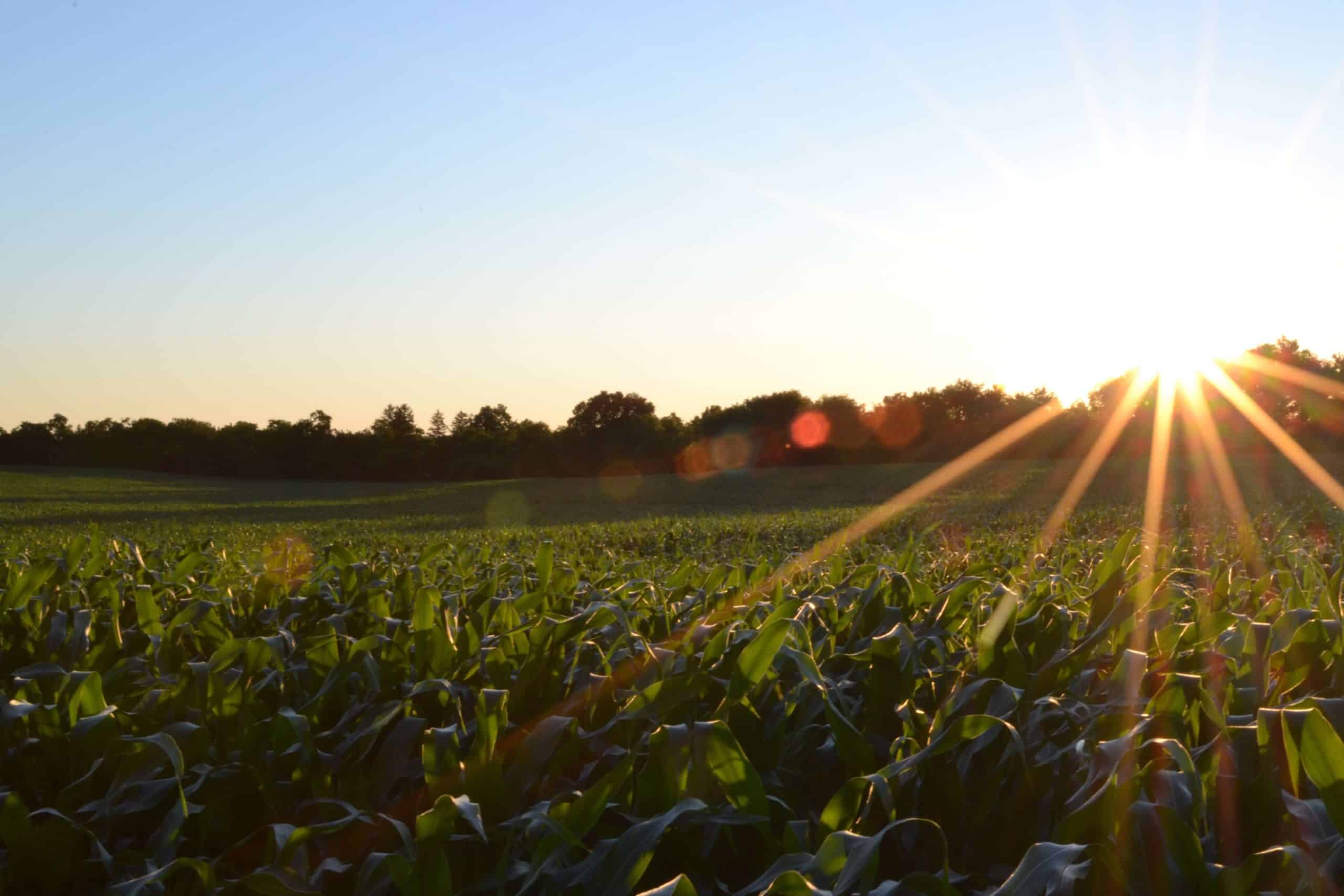Introduction
Farm sale prices are determined by a number of factors, two of which are the productivity (yield) and the rental income. If a farm is able to produce more bushels of corn or beans compared to the farm down the road from it, it is worth more when it comes time to sell. The same can be said about the rental income from a farm. If your farmer pays you a more competitive rent compared to farms in the area, the farm is worth more in a sale.
Minnesota Average Corn Yield for 2021
| County | State | Year | Commodity | Average Value | |
|---|---|---|---|---|---|
| 1 | Waseca | Minnesota | 2021 | Corn | 213.7 |
| 2 | Watonwan | Minnesota | 2021 | Corn | 210.1 |
| 3 | Freeborn | Minnesota | 2021 | Corn | 208.1 |
| 4 | Steele | Minnesota | 2021 | Corn | 206.2 |
| 5 | Sibley | Minnesota | 2021 | Corn | 203.9 |
| 6 | Nobles | Minnesota | 2021 | Corn | 203.3 |
| 7 | Blue Earth | Minnesota | 2021 | Corn | 201.5 |
| 8 | Martin | Minnesota | 2021 | Corn | 195.3 |
| 9 | Cottonwood | Minnesota | 2021 | Corn | 195 |
| 10 | McLeod | Minnesota | 2021 | Corn | 194.4 |
Minnesota Average Cash Rent for 2021 – $177
Minnesota traditionally has competitive cash rents for non-irrigated tillable row crop farmland in the Midwest. The average cash rent earned throughout the state in 2021 was $177 an acre. Below is a chart of the highest average cash rents by county. 2021 Non-Irrigated Cash Rent County Leaderboards
| State | County | 2020 Avg. Cash Rent | 2021 Avg. Cash Rent | |
|---|---|---|---|---|
| 1 | Minnesota | Sibley | $249 | $250 |
| 2 | Minnesota | Rock | $224 | $249 |
| 3 | Minnesota | Blue Earth | $217 | $238 |
| 4 | Minnesota | Faribault | $223 | $237 |
| 5 | Minnesota | Watonwan | $226 | $235 |
| 6 | Minnesota | Martin | $221 | $232 |
| 7 | Minnesota | Dodge | $210 | $232 |
| 8 | Minnesota | Le Sueur | $221 | $231 |
| 9 | Minnesota | Jackson | $198 | $229 |
| 10 | Minnesota | Mower | $217 | $229 |
When landowners and farmers calculate cash rent, one common method is the Return on Investment (ROI) approach. In this method: Rent = Value of Land/Acre X ROI (~2.5% – 4%) Here is an example of the ROI method: Rent = $750,000/100 acre X 2.5% Rent = $10,000 X 2.5% (0.025) Rent = $250 per acre. What this means: If land has traditionally been under-rented compared to its potential yield productivity (bushels per acre) it can lower the overall value (price per acre) of a farm in the event of a sale. This is why it is crucial to track cash rent and evaluate it compared to the productivity of the farm and track soil testing and nutrient application.
Minnesota Average Soil Productivity (PI) – 66.36 CPI
Minnesota has very productive soil for an array of agricultural purposes. Minnesota is known for its corn, soybean, sugar beets, and wheat production. The Minnesota Crop Productivity Index (CPI) ratings provide a benchmark for different soil types and how well they are suited for row crop production. Soil ratings range from 0 to 100 in Minnesota. Like most soil rating scales, the closer to 100 translates to higher potential productivity for that soil. Here are the top 10 Counties by average soil PI in Minnesota:
| County | State | Crop Productivity Index | |
|---|---|---|---|
| 1 | Nobles | Minnesota | 90 |
| 2 | Chippewa | Minnesota | 89 |
| 3 | Martin | Minnesota | 89 |
| 4 | Traverse | Minnesota | 89 |
| 5 | Cottonwood | Minnesota | 88 |
| 6 | McLean | Minnesota | 88 |
| 7 | Douglas | Minnesota | 88 |
| 8 | Sibley | Minnesota | 88 |
| 9 | Jackson | Minnesota | 87 |
| 10 | Redwood | Minnesota | 87 |
Minnesota Average Farm Sales – 2021 – $8,200.93/acre
As one might suspect, the counties with the highest average yields, cash rent, and soil productivity are typically the highest counties in the state for average sale prices for farmland*. All of these extremely important pieces of data about farmland go hand-in-hand. Minnesota is known for its soil and crop diversity, growing different crops throughout the state to match the appropriate soil types. Land sale values will vary throughout the state to reflect this diversity. The average sale price for the top 10 counties in Minnesota in 2021 was $8,200.93/acre. Below is a chart showing the top 10 counties for average prices of farms for sale in Minnesota in 2021.
| County | Sold Year | Median Price per Acre | Total Acres | |
|---|---|---|---|---|
| 1 | Carver | 2021 | 10,392.16 | 2,401.20 |
| 2 | Scott | 2021 | 9,859.61 | 4,708.70 |
| 3 | Sherburne | 2021 | 8,848.43 | 3,205.90 |
| 4 | Wright | 2021 | 7,951.09 | 6,108.10 |
| 5 | Olmstead | 2021 | 7,754.38 | 10,182.80 |
| 6 | Jackson | 2021 | 7,669.40 | 8,013.50 |
| 7 | Nicollet | 2021 | 7,512.01 | 7,131.60 |
| 8 | Sibley | 2021 | 7,490.18 | 8,852.80 |
| 9 | Faribault | 2021 | 7,488.48 | 10,848.30 |
| 10 | Mower | 2021 | 7,043.60 | 11,938.10 |
*We’ve removed sales of residential and development property to the best of our ability to accurately portray the sale values of farmland throughout the state.
Farm Loans in Minnesota
With all of this data about yield, cash rent, soil, and sale prices, the next step in one’s journey in farmland ownership and investment is, “how do I pay for it if it is such a valuable asset?” Farm loans and mortgages are very common when investing in farmland or expanding your operation. Unlike home mortgages, farm mortgages typically require 25%-35% of the purchase price of the farm as a down payment. This can also be represented as a Loan-to-Value ratio. Now, if you already own farmland with equity, you are able to pledge farmland as collateral for the new farm purchase which can lower the amount required for a down payment. If you are ready to purchase your next farm you can explore our farm mortgage rates here and get a decision in 15 minutes without ever having to go to the bank and fill out pages upon pages of paperwork for an approval.
Found the farmland you are interesed in purchasing?
Now find your loan partner that will make it a reality. Get approved in seconds with an all digital application from AFF, who will work with you to make sure you get the best rates possible.


